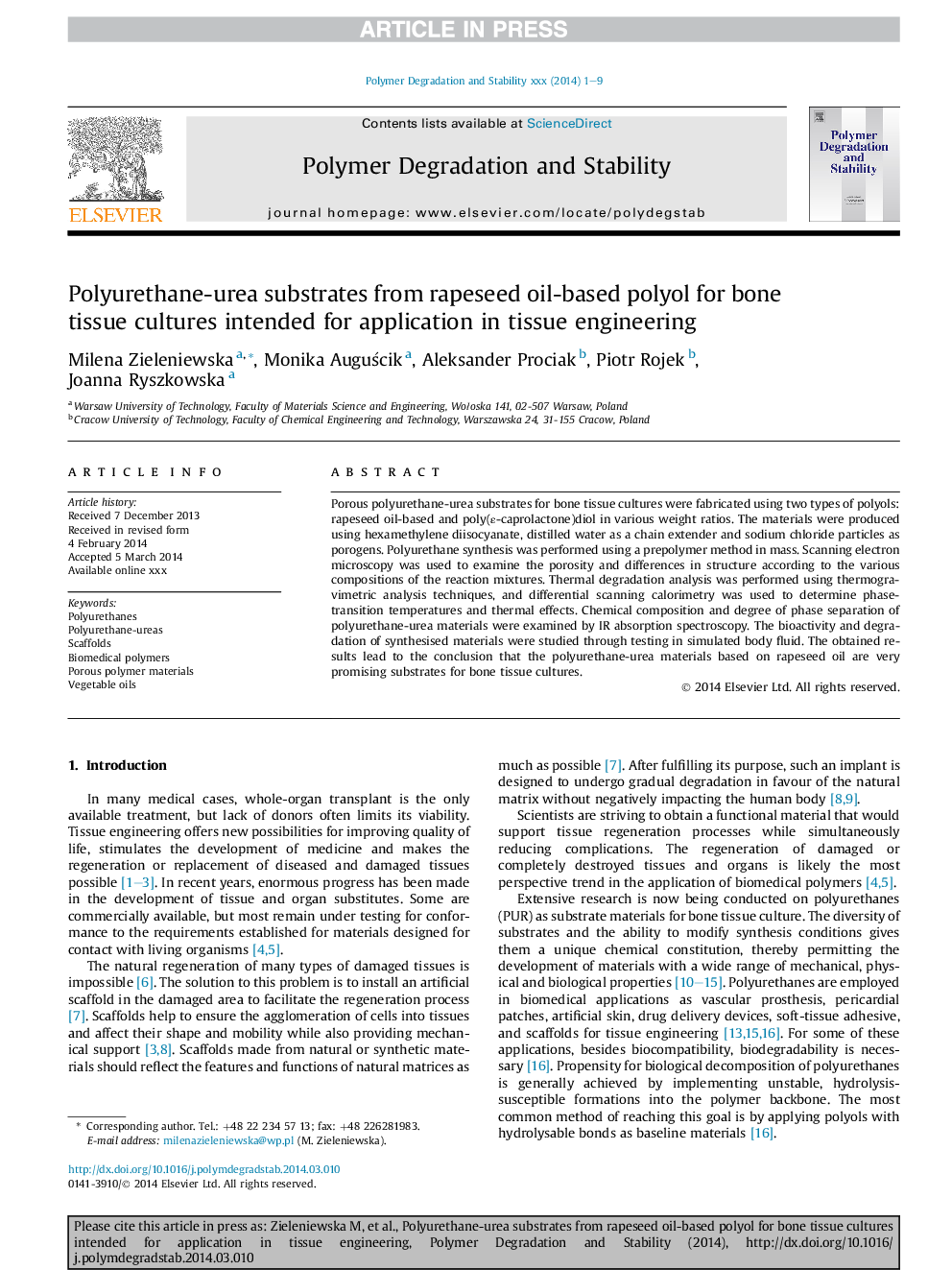| Article ID | Journal | Published Year | Pages | File Type |
|---|---|---|---|---|
| 5201766 | Polymer Degradation and Stability | 2014 | 9 Pages |
Abstract
Porous polyurethane-urea substrates for bone tissue cultures were fabricated using two types of polyols: rapeseed oil-based and poly(ε-caprolactone)diol in various weight ratios. The materials were produced using hexamethylene diisocyanate, distilled water as a chain extender and sodium chloride particles as porogens. Polyurethane synthesis was performed using a prepolymer method in mass. Scanning electron microscopy was used to examine the porosity and differences in structure according to the various compositions of the reaction mixtures. Thermal degradation analysis was performed using thermogravimetric analysis techniques, and differential scanning calorimetry was used to determine phase-transition temperatures and thermal effects. Chemical composition and degree of phase separation of polyurethane-urea materials were examined by IR absorption spectroscopy. The bioactivity and degradation of synthesised materials were studied through testing in simulated body fluid. The obtained results lead to the conclusion that the polyurethane-urea materials based on rapeseed oil are very promising substrates for bone tissue cultures.
Related Topics
Physical Sciences and Engineering
Chemistry
Organic Chemistry
Authors
Milena Zieleniewska, Monika AuguÅcik, Aleksander Prociak, Piotr Rojek, Joanna Ryszkowska,
